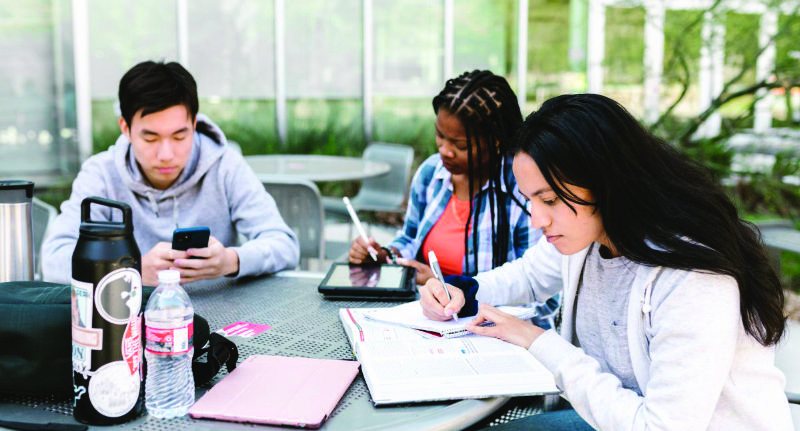Financial Aid for CA Community Colleges – Time is Running Out
California Community Colleges, the largest higher education system in the nation, rely heavily on student aid to make education affordable for many. This crucial aid is accessible through the Free Application for Federal Student Aid (FAFSA) and the California Dream Act Application (CADAA) for the 2024-2025 academic year. However, community college students must submit their applications by Tuesday, September 3.
In a media briefing on August 15, hosted by Ethnic Media Services, a panel of experts discussed the importance and benefits of FAFSA and CADAA.
Speakers
![]()
- Dr. Daisy Gonzales, Executive Director, California Student Aid Commission
- Ivan Hernandez, President, Student Senate for California Community College
- Nancy Jodaitis, Director of Higher Education, Immigrants Rising
The Importance of Student Aid
“It’s not too late to go to college. $383 million in aid is available by September 3,” said Dr. Daisy Gonzales. “That deadline is a lifeline for students and for California’s ability to continue as a national leader in higher education for mixed-status families and immigrant students.”
California is home to 116 community colleges, with over two million students attending them. More than 70% of these students come from diverse ethnic backgrounds, and 48% identify as Hispanic. Additionally, 54% of all California students who qualify for financial aid—those with annual incomes below $40,000—attend a community college in the state. Furthermore, 65% of California community college students come from Perkins Economically Disadvantaged backgrounds.
“Resources are available to help you—regardless of you or your family’s documentation status—cover tuition and costs like rent, food, transportation, books, and even childcare,” Gonzales explained.
Students who meet the September 3 deadline become eligible for all grants and scholarships available in California.
“I’m living proof of the power of financial aid,” Gonzales shared. “As a foster youth in Los Angeles, I received the incredible gift of a Cal Grant and a Chafee Foster Youth grant, which let me into Los Angeles Valley College at age 15. Later, I went to Mills College in Oakland, and then earned a Master’s and PhD at the University of California Santa Barbara.”
Gonzales has devoted her career to education, motivated by the financial aid she received. “There’s still money on the table, and it can make a difference as to whether students can afford their education,” she added.
Challenges and Support for Students
“I’m still being contacted by undocumented students who are being told, both in high school and adult school and other places that college is not for them,” said Nancy Jodaitis.
Jodaitis emphasized California’s ongoing commitment to supporting immigrants, regardless of national policies. “I want to make sure this message comes through loud and clear: Regardless of what happens at a national level, not that it won’t impact us, not that fear isn’t present, but California will continue to stand with immigrants, who have been such an integral part of our community and our state,” she added.
Governor Newsom’s 2022-2023 state budget set a goal for 70% of Californians to earn a post-secondary degree by 2030. Immigrant and low-income community college students are crucial to achieving this objective. California community colleges educate 55% of the state’s DACA students, and over 50% of all California students are eligible for free tuition at a community college through the aid available until September 3.
“Financial aid is not considered part of public charge,” Jodaitis clarified. “Every public college and university in California has someone dedicated to supporting undocumented students at the school, and your information will not be shared.”
Student Experiences with Financial Aid
“Without financial aid, I don’t think I could be where I am now,” said Ivan Hernandez. “I was born in the U.S. but grew up in Mexico. I moved back for treatment after a leukemia diagnosis, and stayed to pursue higher education. My family didn’t have ways to support my education financially, so it was up to me to apply for aid.”
This year has been particularly difficult for students like Hernandez, who come from mixed-status families and are facing challenges in accessing higher education. Delays and glitches in the new FAFSA application form have caused significant stress.
“I’m the type of individual who usually gets their FAFSA application in a week or two after the application has opened,” Hernandez explained, referring to December 2023 for this academic year. “But I just submitted my FAFSA last week. It was months and months of stress about how I was going to pay for college. I’d made it this far, I didn’t want to give up. I considered getting loans.”
Hernandez encountered difficulties in getting assistance from his institution and FAFSA, receiving little feedback other than, “We’re working on it.” However, he found support through CASC, which helped him complete the application. “It actually was easier than the old form, but many students are struggling with the new language being used—even with translated forms, if specific words don’t translate well to other languages.”
FAFSA and CA Dream Act application assistance is available in multiple languages through CASC, including Spanish, Mandarin, Korean, Armenian, and Arabic. Support is accessible via resource sheets, online chat, email at studentsupport@csac.ca.gov, and phone at (888) 224-7268.
“My parents, who never made it to middle school, always say to me, education is the only thing no one can take away from you,” Hernandez reflected. “The California Community College system really changed my life.”
Hernandez also observed the challenges faced by undocumented and non-traditional students who are working full-time and supporting dependents. “I see a lot of fear in adjusting back to a classroom, or not having the time to ask for help in-person. But there’s a lot of support available,” he said. “It’s an investment in the betterment of yourself and your family.”
Despite the challenges, Hernandez encourages students to persevere. “Regardless of challenges you encounter, you can do it, there is always a way.” Students can apply for aid online through FAFSA and the CA Dream Act.


